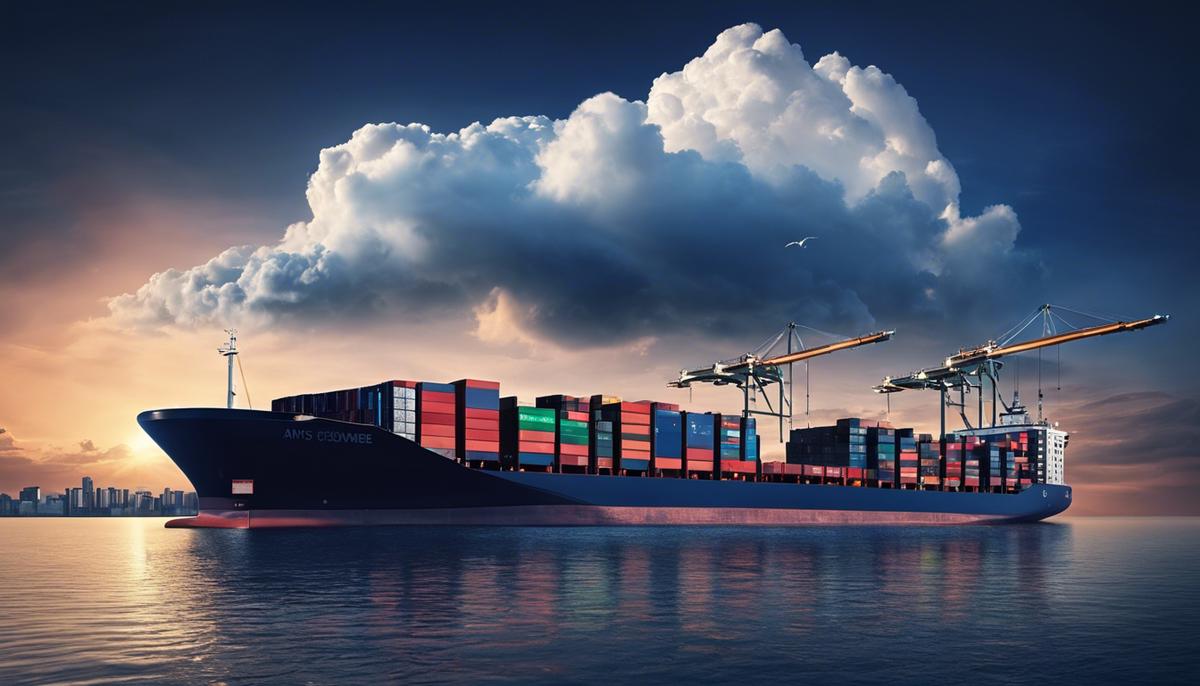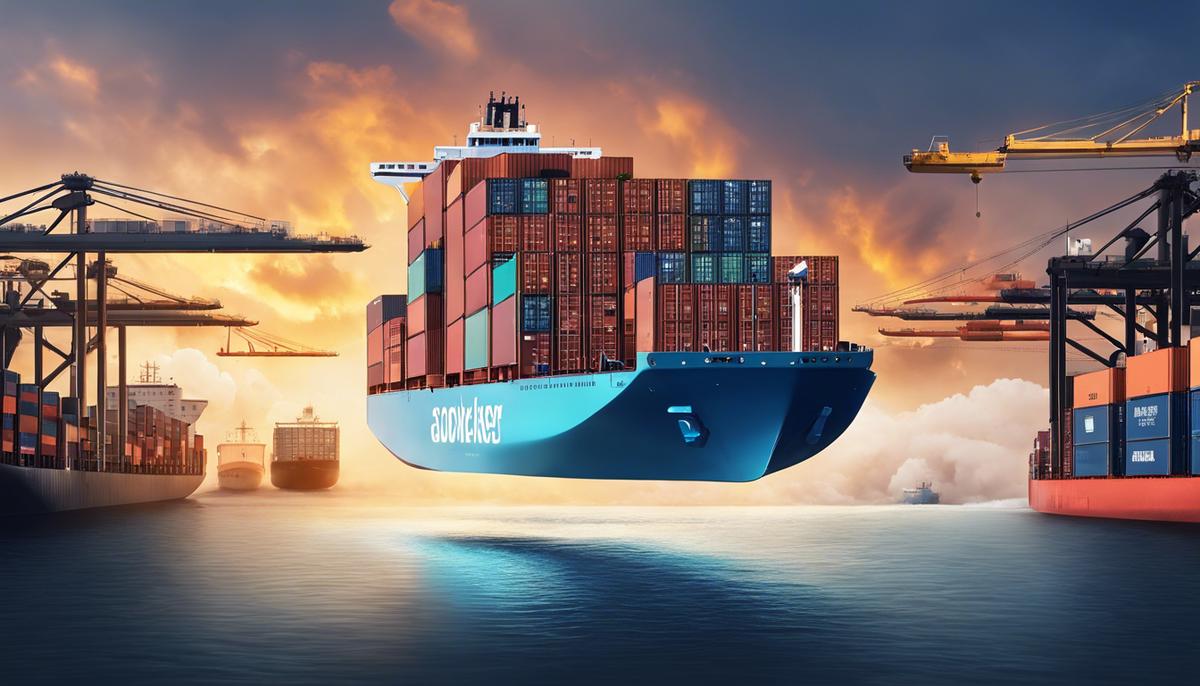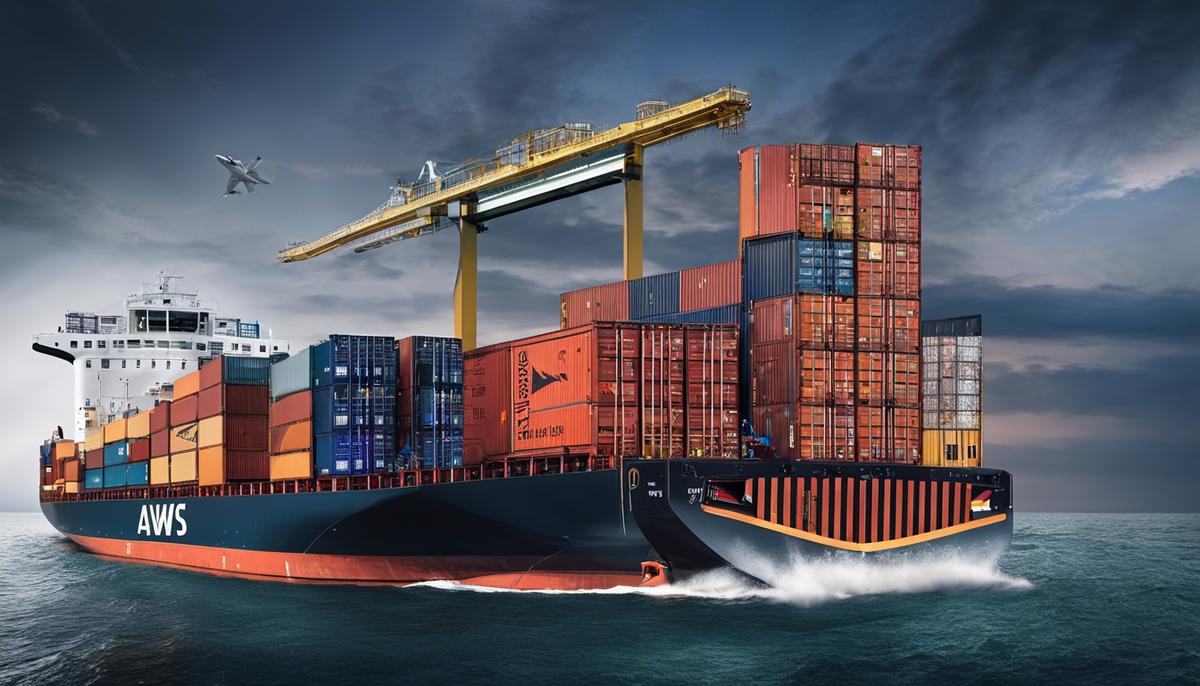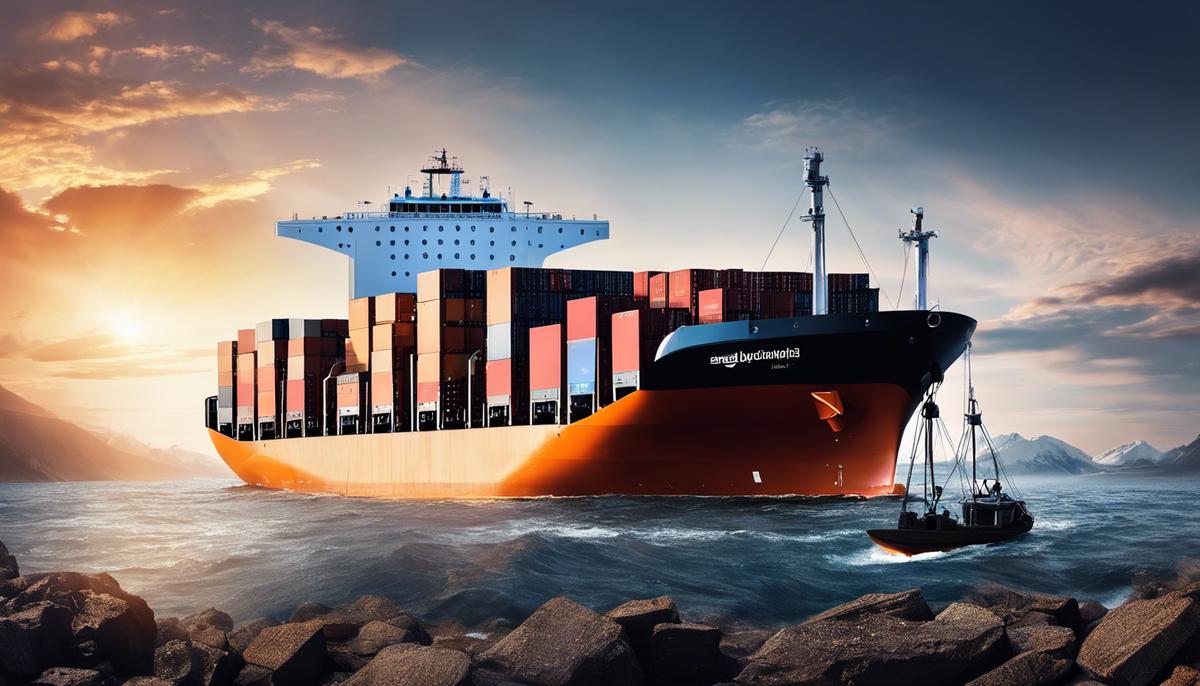As advancements in cloud computing continue to redefine the digital landscape, AWS Lambda Docker Containers have increasingly become a pivotal tool for efficient and scalable operations. Their versatility in managing workloads and optimizing resources situates them as a go-to for technologists and corporations alike. In this discourse, we will explore their importance in enhancing cloud processes while diving into the key steps to get started with these tools. We will unravel best practices for their operation and discuss potential challenges you may encounter while using them, advising on how to navigate through these obstacles. Finally, we will project into the future; identifying trends that may shape the course of AWS Lambda Docker Containers.
Importance of AWS Lambda Docker Containers
In the vibrant world of cloud computing, technologies that solve problems efficiently and swiftly often take center stage. One such innovative solution is the combination of AWS Lambda and Docker Containers. What makes these two together so vital in modern cloud infrastructures? Let’s dive right in.
Docker has been making a buzz in the tech circles for its significant role in application development. It’s all about creating containers – lightweight, self-sufficient packages that house software and all its dependencies in one place. So, what advantage does this bring? Well, dockerized applications act the same across different environments – development, testing, staging, and even production – ensuring consistency unlike ever before.
Enter AWS Lambda, Amazon’s serverless computing sensation. It takes care of running your code on high-availability compute infrastructure, without requiring you to manage servers. You just write your application code and Lambda executes it in response to AWS service events such as changes to data in an S3 bucket or a DynamoDB table. It’s efficient, agile, and cost-effective as you pay only for the compute time consumed.
So, how does Docker tie in with AWS Lambda?
Amazon has recently updated AWS Lambda to support Docker images, giving developers the freedom to package and deploy Lambda functions as Docker containers. This brings the agility of Docker into the serverless world of AWS Lambda, allowing developers to leverage the flexibility of writing code in any language or even using custom runtime.
Lambda containers ensure the ease of application distribution. Docker makes it straightforward to package applications or functions into an image, which can then be run unmodified on any platform supporting Docker. With AWS Lambda and Docker, there are no additional steps for packaging those applications. They could be picked up and run anywhere effortlessly.
Pairing Docker with AWS Lambda means you’re merging the predictability and portability of Docker containers with the scaling and cost efficiencies of AWS Lambda. They fuse seamlessly the worlds of serverless and containerization, giving businesses greater operational flexibility and faster delivery times.
Additionally, AWS’s pay-per-use model fits perfectly with Docker containers. They spring into existence quickly, do their job, then disappear without an unnecessary allocation of resources, making it noticeably cost-effective.
In a rapidly evolving digital landscape, AWS Lambda and Docker Containers stand together as an essential duo in modern cloud computing ecosystem. The combination of these two powerful solutions offers unparalleled consistency, scalability, agility and cost savings, efficiently addressing the challenges of today’s tech-advanced world. This synergistic union pushes the limits of what’s possible in the cloud, reflecting the true potential of modern technology.

Getting Started with AWS Lambda Docker Containers
Demystifying AWS Lambda Docker Containers: A Step-By-Step Beginner’s Guide
A revelation in the world of cloud computing, the powerful duo of AWS Lambda and Docker containers are transforming how we perform serverless operations. If you’re keen on diving into this innovative technology, this step-by-step guide will serve as your launch pad. Let’s get started!
Understanding AWS Lambda and Docker: A Quick Recap
Before we jump in, let’s quickly recap. Docker, a groundbreaking open-source platform, expedites application development by allowing developers to package an application with all its dependencies into a standardized unit called a container. AWS Lambda, on the other hand, is a serverless computing service capable of running your code without provisioning or managing servers and only charges for the compute time consumed. Intriguing, isn’t it?
The Integration of AWS Lambda and Docker
In the cloud computing landscape, the integration of AWS Lambda and Docker containers presents a dynamic fusion of scalability and cost-efficiency. This perfect marriage allows developers to package and deploy Lambda functions as Docker images breezily. Time to dive deeper!
Setting Up Your AWS Lambda Docker Environment
Setting up your environment is the first step. You will need Docker, the AWS Command Line Interface (CLI), and a text editor. Install these, and you’re set.
Creating a Docker Image
Next, you need to create a Docker image for your AWS Lambda function. To do so, use an AWS provided base image for the programming language of your code. Write the Dockerfile, specify the base image, copy your function code, and build the Docker image. Once done, it’s time for a test drive.
Testing Your Function Locally
You can run your Docker image locally to validate its functionality. Although optional, this step could save precious time by identifying errors upfront.
Deploying Your Docker Image
Now comes the exciting part – deploying your Docker image to the AWS Lambda platform. To do this, you need to create an Amazon Elastic Container Registry (ECR) repository, authenticate Docker to the repository, tag your image, push it to the repository, and finally, create your Lambda function.
Running Your AWS Lambda Function
Post-deployment, you can run your function at any time using the AWS CLI or the AWS Lambda console. Monitor the function in the AWS Lambda console. Errors? Solve them efficiently with AWS CloudWatch logs, which capture all the information necessary to debug your function.
Conclusion
AWS Lambda Docker containers offer a streamlined process for application deployment. The step by step guide above will help you get your feet wet in this fascinating technological innovation. As they say in Silicon Valley, “the future is now”. So why wait? Get started and let Lambda and Docker propel you into the future of efficient, scalable, and cost-effective cloud computing. Happy coding!

Best Practices for AWS Lambda Docker Containers
Let’s dive into the essential best practices for working with AWS Lambda Docker Containers.
- Pin Your Engine Versions:
- Keep Your Docker Images Lightweight:
- Implement Multi-Stage Builds:
- Use .dockerignore Files:
- Bake Configuration Into The Image:
- Tailor Your Dockerfile to AWS Lambda:
- Keep the ENTRYPOINT [ “executable”, “param1”, “param2” ] Format:
- Include Error Handling:
- Implement Graceful Degradation:
- Perform Thorough Testing:
To ensure the consistency and reliability of your Docker deployments on AWS Lambda, stick to specific, tested engine versions for your Dockerfile. Using the latest versions could invite unforeseen issues or bugs.
AWS Lambda has a limitation on deployment package size, maxing out at 50 MB for direct uploads. Lightweight images are also more efficient, reducing cold start latency and making your uploads quicker.
To keep the Docker images size under control, utilize multi-stage builds. This divides the build process into multiple stages, each with its own base image and instructions, resulting in a final image that only contains the essentials to run your function.
Like .gitignore, .dockerignore files help prevent unnecessary files from getting into your Docker image. Include all non-application related files here, reducing image size and avoiding potential security risks.
While AWS Lambda allows environment variables to be set, baking configurations into your Docker image can reduce runtime complexity. Use ARG and ENV instructions in your Dockerfile for this purpose.
Remove all unnecessary items for AWS Lambda from the Dockerfile. This includes exposing ports and running as a non-root user as AWS Lambda does not support these concepts.
AWS Lambda runs the Docker image by appending additional parameters to the ENTRYPOINT. Therefore, stick to the ‘exec’ form in your Dockerfile to ensure compatibility.
AWS Lambda has its own built-in retry and error handling, but it’s still important to include error handling in your Docker image. Never allow a silent failure.
Design your Docker application to degrade gracefully under high load. Make use of concepts like Circuit Breaker and Fallback and also use timeouts wherever possible.
Prior to deployment, validate your Docker Images thoroughly. This includes local testing, security vulnerability scanning, linting Dockerfile for best practices, and testing container performance.
Working with AWS Lambda and Docker can radically streamline your development and distribution process. By following these best practices, you can ensure a smoother deployment, efficient application performance, and ultimately, a more robust serverless architecture.
Remember, technology should work for us, making the usual ritualistic processes more automated, efficient, and cost-effective. AWS Lambda and Docker fall right into that vision. Start adapting now!

Potential Challenges and Solutions with AWS Lambda Docker Containers
Venturing into the highly-awaited combination of AWS Lambda and Docker, it’s inevitable to face challenges in harnessing their synergy. While their integration undoubtedly means enhanced portability, more control over the runtime environment, and lower cost implications, it’s not always smooth sailing. Let’s unravel some likely hitches that could interrupt the voyage and turn them into stepping stones towards a seamless AWS Lambda Docker experience.
Arguably, the prime challenge to tackle in AWS Lambda Docker integration is vouchsafing compatibility. Docker containers might run flawlessly in your local environment, but the Lambda ecosystem might not be so welcoming. To avoid this, it’s beneficial to adopt Docker images initially designed for AWS LAMBDA due to their optimal synergy.
Slow startup times could be another issue, especially for infrequently called functions. This hurdle could skyrocket operational costs due to prolonged execution times. The remedy? Keep Docker images lightweight by minimizing the file layers in Docker images, thereby fostering speedy start times. This could be achieved via streamlining Dockerfiles and leveraging multi-stage builds to confine image builds to only what’s necessary.
Exploring further, cold starts seem inevitable. However, they can cause your applications to slow down due to the time taken by AWS Lambda to provision a new worker. Fine-tuning your applications to handle cold starts and integrating error handling mechanisms ensures your applications remain efficient while providing a top-notch user experience.
Another baffling issue arises while managing the AWS Lambda environment configurations. It’s alluring to bake your configuration data straight into your image. But, beware. With changing environments, this could chafe and be erroneous, defeating its purposes. An alternative, more efficient method is using Environment Variables and Secrets Manager from AWS.
Along this journey, the ENTRYPOINT instruction might send you on a tailspin making it complex to construct the Docker container appropriately for AWS Lambda. To rectify this, ensure your ENTRYPOINT instruction follows the format [ “executable”, “param1”, “param2” ] and is consistent with the handler’s definition.
AWS Lambda provides a read-only file system, meaning at runtime, writing files directly to disk can cause function failure. Make sure to write temporary files to /tmp; AWS Lambda allows you to write and read files from this directory.
Last, but certainly not least, you might grapple with the difficulty of debugging applications on AWS Lambda. Executes your function locally for thorough testing before deploying it, to eradicate and debug any potential hitches upfront.
Seal any potential chinks in your AWS Lambda Docker armor by implementing these solutions, promoting efficient applications, graceful degradation during failure states and an overall seamless user experience. Dealing with these roadblocks might require patience and a good degree of finessing, but the rewards will undeniably outweigh the hurdles. Adapting to these challenges and overcoming them fortifies your tech prowess and optimizes the integration of AWS Lambda and Docker, bolstering your cloud environment to its fullest potential.

Future of AWS Lambda Docker Containers
– The Exciting Potential of AWS Lambda Docker Containers
Where do we stand on the journey of combining AWS Lambda and Docker containers? We’re only at the beginning of an extraordinarily promising path. With AWS Lambda offering automatic scaling of applications and Docker providing a platform to automate deployment, it’s no overstatement to say we’re entering a new era of cloud computing.
As we step forward into this era, we find intriguing developments on the horizon. Tools like AWS Step Functions, which coordinate multiple AWS Lambda functions for distributed applications and microservices, are continuing to evolve. These serverless workflows are perfect to be Dockerized, further enhancing the appeal of AWS Lambda Docker containers.
One only needs to look at the rise of AWS Fargate for a glimpse of potential future innovations. The serverless compute engine for containers that works with both Amazon Elastic Container Service (Amazon ECS) and Amazon Elastic Kubernetes Service (Amazon EKS), eliminates the need to manage the underlying infrastructure. As these resources grow more mature, their application in Docker containers running on AWS Lambda will become increasingly efficient and rich in features.
However, it’s also crucial not to overlook the challenges. Namely, there’s a definite need for quicker startup times in Docker images, a hurdle that pioneers in AWS Lambda Docker containers will need to face. Shifts towards provisioned concurrency, a feature which keeps functions initialized and hyper-ready to respond, may help to quell this issue by reducing latency during function scaling.
Environment configuration is another issue that demands our attention. Best practices with AWS Lambda involve managing environment configurations through Environment Variables and Secrets Manager. Moreover, efforts should be made to ensure proper construction of Docker containers for AWS Lambda using the ENTRYPOINT instruction – a minor, but critical, detail that could significantly impact the execution of the AWS Lambda function.
An application’s ability to recover gracefully from a failure scenario or “degradation”, so the service isn’t entirely lost, should not be overlooked. It’s key for users venturing into AWS Lambda Docker containers to implement fault-isolating designs that limit the impact of any potential hazards.
And, of course, we must never underestimate the importance of thorough testing, both locally and post-deployment. Debugging our applications and conducting comprehensive trials leads to a smoother, more reliable operation, and ensures optimum performance of the AWS Lambda Docker containers.
In this rapidly evolving landscape, we can expect several new possibilities in the near future. Factors like better integration of existing AWS services, more robust automation capabilities, and a deeper understanding of serverless applications promise to strengthen the relationship between Docker and AWS Lambda. As a result, we can anticipate an amplified impact of AWS Lambda Docker containers on the world of cloud computing.

As we have explored, AWS Lambda Docker Containers are not simply a passing trend; they hold significant potential to propel cloud computing to new frontiers. The future holds exciting avenues for this technology, with accelerated technological advancements and increased adoption poised to shape its trajectory. It’s clear that as we harness these tools more effectively, optimize their usage following best practices, and navigate potential challenges, we’re better prepared to leverage AWS Lambda Docker Containers for maximum impact. The key is in continuous learning, adaptation, and innovation – with these, the possibilities of what can be achieved using AWS Lambda Docker Containers are truly endless.
Writio: Your AI-powered content writer. This article was crafted by Writio.